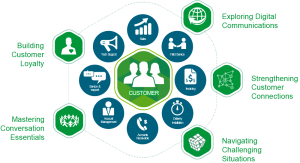A major part of our modern, connected world has seen quite a development in the food delivery systems that it uses. Over the past few years, a mind-boggling amount of third-party food delivery applications and websites. Mostly focused on urban areas, these systems give a whole new dimension to the restoration business. I want to give interest to how they function and why they became so popular so fast.

The principle is quite simple, the targeted consumer segments is slightly better-off households and individuals living in urban areas, with either not enough time or no interest in cooking, and who wish to eat at home. This segment being pretty wide, the strength of this business model is its value proposition: making eating out easier and more accessible.
 First point of analysis is why the market responds so well. The first main reason is that the consumer have a greatly widened eating options since they now access to smaller restaurants that could not afford a delivery service before, but also to restaurants further away that had a limited delivery service before linking with these systems. The second reason is that it creates very accessible jobs for individuals that have access to a vehicle and wish to boost their finance. These jobs require close to no experience and are extremely flexible since for most of these services the worker checks in whenever they can/want, with no set timetable and a wide selection of work hours 7 days a week. There is also a good reaction from the market since with a larger access to restaurants offering similar cuisine forced some of these restaurants to lower prices, therefore adding even more weight to the accessibility value of this new food delivery system.
First point of analysis is why the market responds so well. The first main reason is that the consumer have a greatly widened eating options since they now access to smaller restaurants that could not afford a delivery service before, but also to restaurants further away that had a limited delivery service before linking with these systems. The second reason is that it creates very accessible jobs for individuals that have access to a vehicle and wish to boost their finance. These jobs require close to no experience and are extremely flexible since for most of these services the worker checks in whenever they can/want, with no set timetable and a wide selection of work hours 7 days a week. There is also a good reaction from the market since with a larger access to restaurants offering similar cuisine forced some of these restaurants to lower prices, therefore adding even more weight to the accessibility value of this new food delivery system.
Second point of the analysis is why suppliers (restaurants) responded so well and why the firm side engagement developed so fast. This relates to last point I made, about having a wider selection. It works the other way too since when they get access to this delivery systems, most restaurants will widen their client-base since they now reach more customer through a simpler display and search mechanism then what they were used to. Depending on the quality of their product and therefore on their reviews, restaurants will either increase their revenue or fail in that sense, which has pushed a lot of firms to take the bet and invest in this system.
Overall, this new food delivery industry is sustaining improvement in the restoration market and had every reason to succeed in the first place: very low regulations, fairly low investment needed, but mostly a massive amount of demand, and even though consumers overall did not realize they wanted that service, they most certainly did.
Word count: 450
Source: https://mlsdev.com/blog/71-development-of-mobile-apps-for-food-delivery-services

